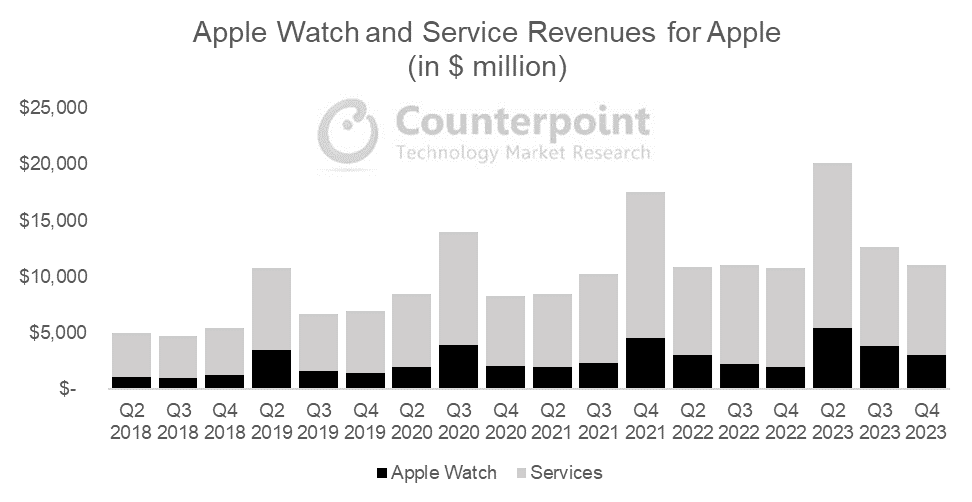Why it matters: The Apple Watch has reached an attach rate of 30 percent, the highest recorded rate for any half-year period since the wearable launched in 2015. Attach rate is a term used in business and marketing to describe the number of units sold that complement another device – in this instance, the iPhone. Put another way, you could say 30 percent of North American iPhone users also own an Apple Watch.
When the Apple Watch launched, Apple was selling an average of one smartwatch for every 10 iPhones. The attach rate has steadily grown over the years, reflecting its evolution in consumers’ eyes from a neat fashion accessory that did not add a ton of value to an addition with utility that truly serves a purpose.
Indeed, the early Apple Watch struggled to serve a purpose or meet a need. While it did allow users to pay for items with Apple Pay and message / place calls, it would be another few years before Apple truly tapped into the synergy between the Apple Watch and the iPhone. The latest iteration of the Apple Watch is a feature-rich wearable that can track sleep, take an ECG, detect falls, check blood oxygen saturation, measure body temperature for ovulation tracking, call for help if you have been in a crash and more.
The future looks bright as well. In 2021, Apple Watch shipments were just 18 percent of global iPhone shipments. If Apple sees every iPhone user as a potential Apple Watch user, the revenue opportunity is huge. And with average selling prices on the rise and the emergence of premium devices like the Apple Watch Ultra, the potential to drive revenue is even greater.

More watches on users’ wrists also correlates to the potential to sell additional services like Apple Music and Apple Care. Sucking users deeper into the ecosystem also makes it less likely that they will switch to Android and abandon their purchases in Apple’s walled garden.
Image credit: Daniel Korpai


